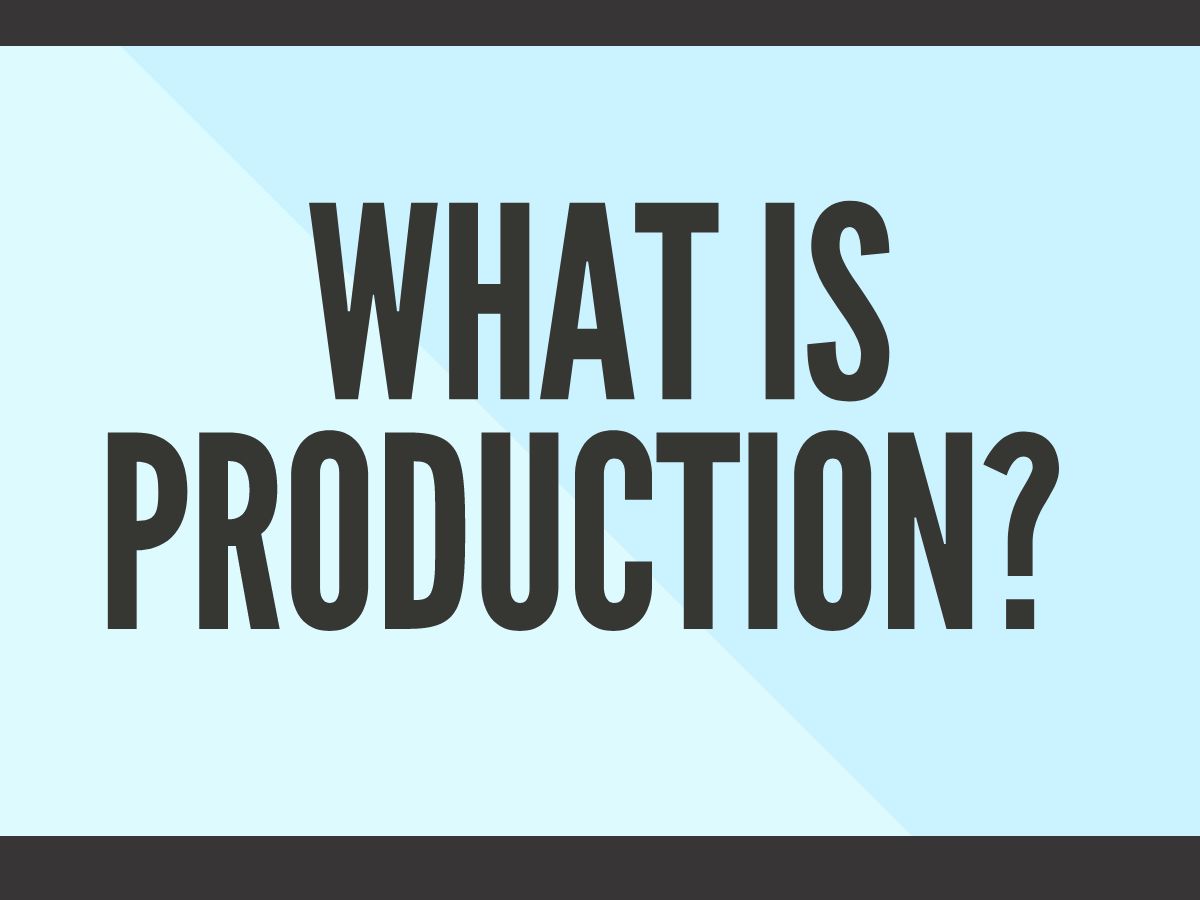What is Production? Meaning, Types, Examples And Theory

Production is the process of creating goods and services using various resources such as labor, capital, and raw materials. It involves transforming inputs into outputs that are valuable to customers.
The production plays a crucial role in economic growth and development as it provides goods and services that satisfy human needs and wants.
Meaning of Production:
Production is the process of combining various inputs, such as labor, capital, and raw materials, to create valuable goods and services to consumers. The goal of production is to create outputs that are of high quality, low cost, and meet customer needs and expectations.
Types of Production:
There are three main types of production:
Manufacturing Production:
Manufacturing production involves using machinery and equipment to transform raw materials into finished products. Examples include factories that produce cars, appliances, and electronic devices.
Service Production:
Service production involves providing services that are valuable to customers. Examples include hair salons, restaurants, and hospitals.
Agricultural Production:
Agricultural production involves the production of crops and livestock. Examples include farms that produce fruits, vegetables, and livestock.
Examples of Production:
Some examples of production include:
- A factory that produces cars using raw materials, labor, and capital
- A restaurant that provides meals to customers using food ingredients and labor
- A farm that produces crops using land, seeds, and labor
Theory of Production:
The theory of production focuses on understanding how inputs are combined to create outputs. The theory of production includes several key concepts, including total product, marginal product, and average product.
- Total Product: The total product is the total amount of output that is produced using a given amount of inputs.
- Marginal Product: The marginal product is the additional output that is produced by adding one more unit of an input while holding all other inputs constant.
- Average Product: The average product is the output per unit of input.
The production theory helps businesses understand how to optimize their production processes and
FAQ
What is the production process?
ANS: The production process refers to the steps involved in transforming inputs into outputs, which include acquiring raw materials, processing and transforming materials, assembling components, and packaging and distributing finished products.
What is the difference between manufacturing and production?
ANS: Manufacturing is a type of production that involves transforming raw materials into finished products using machinery and equipment. Production refers to the broader process of creating goods and services using various resources.
What is lean production?
ANS: Lean production is a philosophy and management approach that focuses on reducing waste and maximizing efficiency in the production process. It involves identifying and eliminating non-value-added activities and continuously improving processes.
What is just-in-time production?
ANS: Just-in-time production is a strategy that aims to minimize inventory levels by producing goods only when needed. This strategy helps to reduce waste and improve efficiency by eliminating excess inventory and reducing the need for storage space.
What is the importance of production planning and control?
ANS: Production planning and control help businesses to manage their production processes more efficiently by ensuring that resources are used effectively, production is aligned with demand, and quality is maintained. This process helps optimize resource use and reduce costs while also improving customer satisfaction.
What is automation in production?
ANS: Automation in production refers to the use of machinery and technology to perform tasks that would otherwise be done by humans. Automation can improve efficiency, reduce labor costs, and improve product quality.
What is the role of technology in production?
ANS: Technology plays a key role in modern production processes, allowing businesses to automate tasks, improve efficiency, and reduce costs. Technology can also help improve product quality and speed up production.
What is the difference between mass production and custom production?
ANS: Mass production involves producing large quantities of standardized products using assembly-line techniques, while custom production involves producing unique products tailored to individual customer needs. Mass production is often used for consumer goods, while custom production is more common in specialized industries.
What is capacity planning in production?
ANS: Capacity planning in production involves determining the maximum amount of output a production system can produce over a given period. This process helps businesses optimize their production processes and ensure they can meet customer demand.
What is the impact of production on the environment?
ANS: Production can have a significant impact on the environment, as it can lead to pollution, resource depletion, and other environmental problems. Businesses can mitigate these impacts by adopting sustainable production practices and using renewable resources.
Achieve maximum output at the lowest possible cost.
Conclusion:
Production is the process of creating goods and services using various resources such as labor, capital, and raw materials.
There are three main types of production, manufacturing production, service production, and agricultural production. The theory of production focuses on understanding how inputs are combined to create outputs and helps businesses to optimize their production processes. The production plays a crucial role in economic growth and development, providing goods and services that satisfy human needs and wants.
